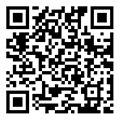With the development of China’s economy and the concerns of food security in the domestic market, more and more Chinese consumers are looking for high quality overseas products, ranging from formula milk powder to luxury Swiss watches. As such, more foreign investors have found this business opportunity as well. Today we will talk about (and calculate) the taxes you must pay when you import those consumer goods to China.
Case background
On January 2014, David Young set up his Importation & Exportation trading company in Ningbo, and focused on the importation of bottled wine from Chile, South America. On March 15, 2014, he decided to import a shipment of wine. The CIF price to Ningbo BeiLun port is USD 12.00 each, and the total volume is 5,000 bottles. And one month later, the goods arrive at the port and he is going to declare it to the China Customs.
Customs Duty
So far, the goods are levied Customs Duty, and the rates are determined by the tariff classification for the goods. In this case, the grape wine is 14%. Duty is payable on the Customs value of the goods. (Assume the CIF price is the same as Customs value). So the Customs Duty you have to pay is RMB 52,080.
Customs Duty (CD) = CIF (Customs Value) × CD Rate = USD12/bottle × 5 000 bottles × FX6.2 ×14%=RMB 52 080
Consumption Tax
According to the China Consumption tax law, there are 14 types of imported products that will be assigned a Consumption tax. These include Tobacco, Wine, Cosmetic, Luxury Jewelry, Fireworks, Gasoline, Auto Tires, Motorcycle, Automobile, Golfing products, Luxury watches, Yacht, instant-chopsticks and wooden floorboards. The rate is from 1% (a low emissions car) to 56% (processed cigarettes). We can see that the Consumption tax only focuses on high-end consumer goods. In this case, grape wine falls in the category of Wine, which applies a 10% Consumption Tax. At the same time, the Consumption tax is a tax included in the price, so the formula is set out like this:
Consumption Tax (CT) = (CIF+ Customs Duty) ÷ (1-CT Rate) × CT Rate= (RMB372 000+52 080) ÷ (1-10%) × 10%=RMB47 120
Value added Tax
Value added Tax (VAT) is one of the most important taxes in mainland China, as it applies to almost all imported products at a rate of 17% (certain exceptions exist - i.e., agriculture, science, environment protection, disability association, public health and so on.) The VAT is calculated based on all previous taxes, plus the CIF price, as such:
Value Added Tax (VAT) = (CIF + Customs Duty + Consumption Tax) ×VAT Rate= (RMB 372 000+RMB 52 080+RMB 47 120)*17%=RMB 80 104
Of course, the VAT for imported products could be set against the VAT for domestic sales, as long as it follows the nature of the VAT rules. Which means the input VAT could be covered by the output VAT.
Summary and Comments
From the above calculation, we can see that the total taxes for imported wine are RMB179 304, and if it is divided by the CIF price RMB372 000, we could get the total import tax burden for the wine, which is 48.2%.
In a word, for most luxury consumables, the imported taxes account for around 50% of the total cost (and in some cases, even higher). Of course, as the importers, you could pass on those costs to the domestic consumers. However it will obviously reduce the competitiveness compared to the products made in China.
Just remember, as an importer, when you choose what type of products you are going to import in China, the Custom Duty and Consumption Tax will play an important role. You have to think twice before you leap.
Keywords: Ningbo accounting, Ningbo Auditor, Ningbo accountants, Ningbo CPA
关键词:宁波会计,宁波审计,宁波会计师,宁波涉外会计,宁波注册会计师
Victor & Truman,CPAs 宁波纬度会计师事务所(普通合伙)


